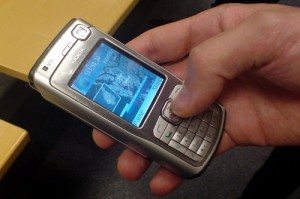 For a long time a lot of smart people have been talking about the need for news organizations to deliver more content to mobile devices, but most of time, the discussions are a little light on how the move will actually change the job of a journalist.
For a long time a lot of smart people have been talking about the need for news organizations to deliver more content to mobile devices, but most of time, the discussions are a little light on how the move will actually change the job of a journalist.
Writing for Poyner’s E-Media Tidbits, Steve Buttry offers some specifics:
Every journalist must quickly get serious and fluent with metadata, data about data (think of the story behind the story). This will feel scary and unreasonable at first. Even the term is a bit scary. But reporters and photographers have always gathered more information than we shared with readers.
Buttry says that location metadata is often critically important to mobile users, and journalists should not only be working with GPS-enabled phones and laptops, but also they should know how to “supplement and override automatic location information” in situations where a story involves more than one location or the auto-generated content is inaccurate.
Another critical skill, according to Buttry, is a firm grasp of tagging and how to do it well.
Where isn’t the only W we need to provide in the metadata. We need to tag content efficiently with the other relevant W’s: Who is pictured in this photo or video? What is happening? When did it happen? Sometimes why or how or how much will need to be in the tags as well, and some of those questions will need to be answered many times, for each person in a story, video or database or for each date in a narrative story.
Buttry says journalists will need to be trained in how to effectively tag stories and the software programs used will also need to be improved.
He goes on to write about the ways in which a “mobile first” strategy might be used to improve investigative reporting.
What seems most useful about this discussion is Buttry’s concrete suggestions for the knowledge and skills journalists will need to acquire to succeed on a new platform.








